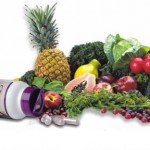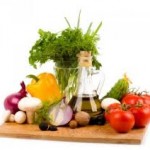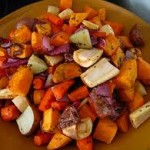The Lymphatic and Immune systems are deeply connected.
How so you support and maintain a healthy lymphatic system?
The lymphatic system plays an integral role in the immune functions of the body. It is the first line of defense against disease. This network of vessels and nodes transports and filters lymph fluid containing antibodies and lymphocytes (good) and bacteria (bad)
The majority of our lymph nodes are in our gut. Lymph flows in one direction only (towards the heart). Blood is pumped by the heart to all parts of the body. Lymph is not pumped. It passively flows from the tissues into the lymph capillaries. This is why a massage therapist moves lymphatic fluid toward the heart.
Approaches on how to detox, heal and strengthen this system.
The lymphatic system is a network of tissues and organs that help rid the body of toxins, waste and other unwanted materials. The primary function of the lymphatic system is to transport lymph, a fluid containing infection-fighting white blood cells, throughout the body. This system is always the first one to be evaluated in Ayurveda. These are the drains of the body and comprise the body’s largest circulatory system. The body’s ability to detox well starts in the lymphatic system.
The lymph starts in the digestive system, making optimal detox a result of optimal digestion. A new study show that when we sleep the glymphatic system (lymph channels in the brain), and drains up to 3 lbs. of neurotoxins from the brain and cerebral spinal fluid which drains back into the lymphatic system. Sleeping on your left side helps the lymph nodes in the brain to drain. I call it brain drain…
The most well known neurotoxin beta-amyloid, is drained through these glymphatics. Studies suggest that accumulation of beta-amyloid plaque and sleep, are bidirectional where the less you sleep the more plaque accumulates and the more plague accumulates, the worse you sleep. Studies are showing a direct connection to cognitive issues.
The lymphatic system primarily consists of lymphatic vessels, which are similar to the circulatory system’s veins and capillaries. The vessels are connected to lymph nodes, where the lymph is filtered. The tonsils, adenoids, spleen and thymus are all part of the lymphatic system.
Antioxidants in the Lymph
Powerful antioxidants in berries such as strawberries and blueberries, along with the liver’s superoxide dismutase and lipid peroxides, have shown to be extremely active in the lymphatic system in the fight against the aging process.
The lymphatic system is the carrier transport pathway for the immune system, it delivers fats to every cell of the body, and it also acts as the garbage can for undigested proteins and toxic fats that accumulate in the intestines.
For this reason, antioxidants (found in berries, for example) are extremely active in areas of lymphatic concentration throughout the body, particularly in those lining the digestive system, helping to trigger autophagy or self-cleansing of the brain.
Ayurveda has always praised berries for being natural lymph-movers and for supporting the body’s detox pathways. Don’t miss the berry harvest this fall, as it is an important season to cleanse in as we transition into winter.
Eat Red: Lymph Cleansing Foods
Plants that were historically used as dyes, such as berries, cherries, beets and turmeric, were commonly used as lymph movers, or what we now know as antioxidants. Blueberries, raspberries and strawberries are all traditional dyes and well-documented antioxidants.
Pomegranates are the lymph movers for the fall and beets and cranberries support healthy lymphatic flow in the winter.
In Ayurveda, the study of rejuvenation and longevity is called rasayana. Rasa mean lymph, and so, rasayana is the study of the rasa or lymphatic system.
Your Lymph: A Busy Two-Way Street
While the lymph, according to Ayurveda, brings nutrition into the cells, it is most famous for its role in removing waste from the body. The lymph drains the intercellular spaces all over the body. Any waste, debris or toxicity finds itself first and foremost in the lymph to be processed out of the body. Thus, strategies for better lymph flow are valuable tools for optimal overall health. Ayurveda’s premier herbal lymphatic support is a root called Manjistha (Rubia cordifolia, meaning “red root.”)
Upping the Antioxidant Ante
In one study, Manjistha was found to provide powerful liver support when the liver was exposed to higher and higher levels of toxic chemicals. One mechanism by which Manjistha was shown to do this was by boosting the production of glutathione levels. Glutathione is perhaps the body’s most powerful antioxidant. In two other studies, Manjistha was found to be a potent antioxidant and, in one, even out-performed some classic antioxidants such as EDTA (used for detox) and vitamin E. Antioxidants generally work their magic within the lymphatic system. Manjistha was also shown to protect the good fats in the liver and lymph from lipid peroxidation, which is when good fats become bad fats within the body.
When the lymph gets congested, you might experience tiredness, stiffness in the morning or stiffness that moves around the body. The skin can break out in an attempt to flush toxins through the skin that healthy lymph would otherwise manage. Sinus irritation, the inability to tolerate certain foods, environmental sensitivities, holding onto water in the hands and feet, and bloating around the belly are all signs of lymphatic congestion. During menstruation, the breasts can become tender and hold water, as the lymph drains the reproductive fluid. If you experience any of these, consider the following techniques to support healthy lymph flow.
Other Lymphatic-Moving Techniques:
- Fill 50% of your plate with green veggies (they are alkalizing and move lymph).
- Sip hot water every 10-25 minutes each day for 2 weeks.
- Increase your seaweed intake – seaweed naturally contains iodine, which supports healthy lymph. (spirulina, blue-green algae, chlorella)
- Dry brush skin daily (called gharshana) with raw silk gloves.
- Enjoy daily oil massage with Lymphatic Massage Oil.
Try Manjistha – 400mg 1-3 times per day with meals. Take Iodine
Description of the lymphatic system
There are hundreds of lymph nodes in the human body. They are located deep inside the body, such as around the lungs and heart, or closer to the surface, such as under the arm or groin. The lymph nodes are found from the head to around the knee area. If the spleen detects potentially dangerous bacteria, viruses, or other microorganisms in the blood, it — along with the lymph nodes — creates white blood cells called lymphocytes, which act as defenders against invaders. The lymphocytes produce antibodies to kill the foreign microorganisms and stop infections from spreading. Humans can live without a spleen, although people who have lost their spleen to disease or injury are more prone to infections.
The lymphatic system is a network of tissues and organs that help rid the body of toxins, waste and other unwanted materials. The primary function of the lymphatic system is to transport lymph, a fluid containing infection fighting white blood cells.
The lymphatic system primarily consists of lymphatic vessels, which are similar to the circulatory system’s veins and capillaries. The vessels are connected to lymph nodes, where the lymph is filtered. The tonsils, adenoids, spleen and thymus are all part of the lymphatic system.
Description of the lymphatic system
The thymus is located in the chest just above the heart. This small organ stores immature lymphocytes (specialized white blood cells) and prepares them to become active T cells, which help destroy infected or cancerous cells.
Tonsils are large clusters of lymphatic cells found in the pharynx, they are the body’s “first line of defense as part of the immune system. They sample bacteria and viruses that enter the body through the mouth or nose.” They sometimes become infected, and although tonsillectomies occur much less frequently today than they did in the 1950s, it is still among the most common operations performed and typically follows frequent throat infections.
Lymph is a clear and colorless fluid; the word “lymph” comes from the Latin word lympha, which means “connected to water.”
Plasma leaves the body’s cells once it has delivered its nutrients and removed debris. Most of this fluid returns to the venous circulation through tiny blood vessels called venules and continues as venous blood. The remainder becomes lymph, according to the Mayo Clinic.
Unlike blood, which flows throughout the body in a continue loop, lymph flows in only one direction — upward toward the neck. Lymphatic vessels connect to two subclavian veins, which are located on either sides of the neck near the collarbones, and the fluid re-enters the circulatory system, according to the Mayo Clinic.
Diseases and disorders of the lymphatic system
Diseases and disorders of the lymphatic system are typically treated by immunologists. Vascular surgeons, dermatologists, oncologists and physiatrist
blood cells called lymphocytes, which act as defenders against invaders. The lymphocytes produce antibodies to kill the foreign microorganisms and stop infections from spreading. Humans can live without a spleen, although people who have lost their spleen to disease or injury are more prone to infections.
Plasma leaves the body’s cells once it has delivered its nutrients and removed
also get involved in treatment of various lymphatic ailments. There are also lymphedema therapists who specialize in the manual drainage of the lymphatic system.
The most common diseases of the lymphatic system are enlargement of the lymph nodes (also known as lymphadenopathy), swelling due to lymph node blockage (also known as lymphedema) and cancers involving the lymphatic system, according to Dr. James Hamrick, chief of medical oncology and hematology at Kaiser Permanente in Atlanta.
When bacteria are recognized in the lymph fluid, the lymph nodes make more infection-fighting white blood cells, which can cause swelling. The swollen nodes can sometimes be felt in the neck, underarms and groin, according to the NLM.
Lymphadenopathy is usually caused by infection, inflammation, or cancer. Infections that cause lymphadenopathy include bacterial infections such as strep throat, locally infected skin wounds, or viral infections such as mononucleosis or HIV infection, Hamrick stated. “The enlargement of the lymph nodes may be localized to the area of infection, as in strep throat, or more generalized as in HIV infection. In some areas of the body the enlarged lymph nodes are palpable, while others are to deep to feel and can be seen on CT scan or MRI.”
Inflammatory or autoimmune conditions occur when a person’s immune system is active, and can result in enlargement of lymph nodes. This can happen in lupus, according to Hamrick.
Lymphoma is cancer of the lymph nodes. It occurs when lymphocytes grow and multiply uncontrollably. There are a number of different types of lymphoma, according to Dr. Jeffrey P. Sharman, director of research at Willamette Valley Cancer Institute and medical director of hematology research for the U.S. Oncology Network.
“The first ‘branch point’ is the difference between Hodgkin lymphoma and non-Hodgkin lymphoma (NHL),” Sharman said. Non-Hodgkin lymphoma is more common of the two, according to the Lymphoma Research Foundation.
The most common types of NHL are follicular, which accounts for about 30 percent of all NHL cases; diffuse large B-cell lymphoma (DLBCL), which comprises 40 to 50 percent of NHL cases; and Burkitt’s lymphoma, which accounts for 5 percent of NHL cases. “The remainder of cases makes up the bewildering complexity of NHL,” Sharman said.
“Though there can be a significant range within an individual category, the clinical approach to each category is unique and the expectations of patient outcome varies by category,” Sharman said.
When a person has had surgery and/or radiation to remove a cancer, the lymphatic flow back to the heart and can result in swelling or lymphedema, Hamrick noted. This most commonly occurs in women who have had surgery to remove a breast cancer. Part of the operation to remove the breast cancer involves removing lymph nodes in the armpit.
The more lymph nodes removed the higher the risk of chronic bothersome swelling and pain due to lymphedema in the arm, Hamrick explained. “Fortunately, modern surgical techniques are allowing for fewer lymph nodes to be removed, and thus fewer cases of severe lymphedema for breast cancer survivors.”
Some interesting research has been done on why people possibly get lymphoma. For example, VU University Medical Center in Amsterdam researched a nationwide Dutch pathology registry between 1990 and 2016. From the research, they estimated that the risk of developing anaplastic large cell lymphoma in the breast after getting implants is 1 in 35,000 at age 50, 1 in 12,000 at age 70, and 1 in 7,000 at age 75. The study was published in the Jan. 4, 2018 issue of the journal JAMA Oncology.
Castleman disease is a group of inflammatory disorders that cause lymph node enlargement and can result in multiple-organ dysfunction, according to the Castleman Disease Cooperative Network. While not specifically a cancer, it is a similar to a lymphoma and is often treated with chemotherapy. It can be unicentric (one lymph node) or multicentric, involving multiple lymph nodes.
Lymphangiomatosis is a disease involving multiple cysts or lesions formed from lymphatic vessels, according to the Lymphangiomatosis & Gorham’s Disease Alliance. It is thought to be the result of a genetic mutation.
Tonsil stones are another problem that can happen to the lymphatic system. Small bits of debris catches on the tonsils and white blood cells attack the debris and leave behind hard a hard biofilm that breaths oxygen. They are not smooth like regular stones, though. “Instead, they look like prunes, with crevices where bacteria can accumulate,” said Chetan Kaher, a dentist in London. Usually, tonsil stones fall away and get swallowed, but sometimes they need to be manually removed.
Diagnosis and treatment
Diseases of the lymphatic system are usually diagnosed when lymph nodes are enlarged, Hamrick noted. This may be discovered when the lymph nodes become enlarged enough to be felt (“palpable lymphadenopathy”) or are seen on imaging studies such as CT scans or MRIs.
The majority of enlarged lymph nodes are not dangerous; they are the body’s way of fighting off an infection, such as a viral upper respiratory infection. If the lymph nodes become significantly enlarged and persist longer than the infection, then they are more worrisome. There is no specific size cutoff, but typically nodes that persist at larger than a centimeter are more worrisome and warrant examination by a doctor.
Common symptoms of any lymphatic disorder include swelling of the arm or groin, weight loss, fever and night sweats, according to Stephanie Bernik, chief of surgical oncology at Lenox Hill Hospital in New York. “A PET or CAT scan is usually ordered to further investigate.”
The diagnosis of lymphadenopathy depends on the location of the abnormal lymph nodes and other things that are going on with the patient. If the patient has a known infection, then the lymph nodes can simply be followed to await resolution with treatment of the infection. If the nodes are growing quickly and there is no obvious explanation then typically a biopsy is warranted to look for a cancer or an infection. If the node can be felt then this can be done at the bedside with a needle, according to Hamrick.
If the lymph node is deeper, such as in the abdomen or pelvis, Hamrick said the biopsy might need to be done by an interventional radiologist using image guidance to place the needle into the node. Sometimes the biopsy needs to be done by a surgeon in the operating room. This is often where the most tissue can be obtained to make a diagnosis, he said.
With many types of lymphoma and leukemia, there are unique treatment options for each type, according to Sharman. “There is no one ‘summary’ of treatment options. Treatment options can include traditional chemotherapy, immunotherapy (such as using antibodies or immune modulating drugs), and even radiation.”
Treatment of lymphatic diseases depends on treating the underlying cause. Infections are treated with antibiotics, supportive care (while the immune system does its job, as in a viral infection) or antivirals. Lymphedema can be treated by elevation, compression and physical therapy. Cancers of the lymphatic system are treated by chemotherapy, radiotherapy, surgery, or a combination of those modalities, Hamrick noted.
Foods to support the lymphatic system:
- Leafy green vegetables
- Low sugar fruits.
- Ground flaxseed.
- Chia seeds.
- Brazil nuts.
- Water
- Cranberry
- Leafy greens
- Nuts and seeds
- Adaptogenic herbs
- Garlic
- Ginger
- Turmeric
- Seaweed
- Citrus
More ways to heal and maintain a healthy lymphatic system:
. Hot and Cold Showers
The hot water helps dilate the blood vessels, while the cold water shrivels them. This creates a “pump” action, that forces out the toxic fluids that have remained in the body. This therapy is not recommended for pregnant women or for those who suffer from cardiovascular disease.
4. Use Dry Brushing
Brush your dry skin in a circular motion for 10 minutes by using a natural bristle brush, and then take a shower. You can combine dry brushing with hot and cold showers for better effects.
5. Drink Clean Water
It is advisable to drink up to half your bodyweight in ounces of water per day to further cleanse your system of toxins. (For example, if you are 160 lbs. = 80 ounces of water). You should also drink a few glasses of lemon water as well.
6. Avoid Wearing Tight Clothes
By wearing excessively tight clothing, you are reducing circulation in the lymphatic system. Tight clothing can cause blockages in the lymphatic system, which can lead to an accumulation of toxins. (No bras with wires for example)
7. Breathe Deeply
Our bodies have 3 times more lymph fluid than blood, but there is no organ to pump it. The pumping action of deep breathing will help the lymphatic system transport the toxins into the blood before they are detoxified by the liver. Practice making your exhale longer than you inhale by counting to 4 on the in-breath and 8 on the out-breath. Nostril breathing balances the nervous system.
8. Avoid Foods That Cause Blockages To The Lymphatic System
Improve your lymphatic health by avoiding the following foods:
- Processed foods/fast foods
- Conventionally raised meat
- Artificial sweeteners
- Conventional dairy
- Sugar
- Soy
- Table salt (morton’s)
10. Drink Herbal Tea That Stimulates Lymph Flow
There are many herbs that can be very helpful for the lymphatic system. Use the following herbs to prepare teas that promote lymph health: I herb or Herbs etc.
- Echinacea
- Astragalus
- Wild indigo root
- Goldenseal
- Cilantro
- Dandelion root
- Calendual Blossoms
- Parsley
- Dr. Douillard’s from Lifespa.com has lymph products that can be very beneficial.
- Lymph Cleanse
- Manjistha
- Brahmi-Brain—brain tonic for energy, mental clariy and restful sleep
- Lymphatic massage oil
- Exfoliant silk gloves








